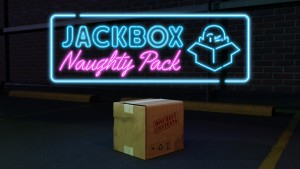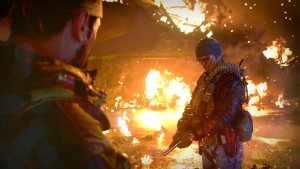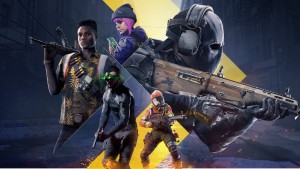Please support Game Informer. Print magazine subscriptions are less than $2 per issue
The Division: Survival Impressions – A Tense, Fleeting Diversion

The last time I spent considerable time with The Division, I felt the game was chugging down a loot farming track that no longer offered a compelling reason for me to stick around. I wasn’t the only one, as the player population dipped drastically due to glitches, exploits, cheaters, frustrating endgame activates, and a broken loot system. A lot has changed since then.
In the 1.4. and 1.5 patches, developer Massive completely revamped the gear acquisition loop for the endgame, made shops matter again, introduced new world tiers that determine the level of gear baddies drop, and rebalanced enemies to make the more challenging difficulty settings less maddening. The community has responded positively to the changes, and many who abandoned the game returned just in time for the new DLC drop, Survival.
Survival is an interesting departure for The Division that leaves behind all of the progress you’ve made with your character through the campaign, the Underground DLC, and the endgame activities. Hopping aboard a helicopter wearing only hazmat suits, 24 players are tasked with finding an experimental antivirus vial that may hold the key to counteracting the green poison that decimated New York City. On the way to the Dark Zone the helicopter crashes, scattering the players throughout the environment.
Wearing next to nothing in freezing temperatures and armed with only a pistol, players must scavenge to find critical resources like warm clothing, armor, better weaponry, and medicine before succumbing to frostbite or infection. Just as with the base game, you have a better chance of surviving if you stick with a squad. I don't recommend going it alone, especially if you choose PvP over a PvE instance.
The early moments of Survival are all about finding crafting materials in the LZ in between visits to fire barrels or interiors that can warm you back up. You don’t have much time before frostbite takes hold and starts draining your health, but teammates can revive you should you spend too much time out in the cold. Safe houses feature a crafting bench where you can construct warmer clothes, new guns, and medpacks. Critical abilities like pulse, first aid, and supply stations must also be constructed in this mode.
Finding supplies like water, canned food, and painkillers is critical to progressing as well. Taking medicine and painkillers delays the infection spreading through your body, which you can track by checking your life expectancy clock. Staying hydrated keeps your vision sharp, making it easier to identify loot containers. Become malnourished and your health stops regenerating, so hunger must be dealt with immediately. Your best bet for finding loot and supplies is heading toward well-lit areas, which will also likely be defended by enemies. Thankfully, the map tracks the path you’ve already taken so you can avoid backtracking to areas you’ve already looted.
I’m generally not a fan of survival games, but I found The Division's new survival elements well implemented into a truncated experience. The adrenaline pumps as you frantically rush toward a heat source in between scavenging forays, and losing communication with a fallen comrade who strayed too far from the group and paid for it with his life resonates equal parts frustration and remorse. Resources are limited but hardly scarce enough to feel punishing. After a half-hour you usually have enough warm clothing to go long stretches without finding heat sources, good enough gear to fight off harder enemies, and enough crafting supplies to build critical skills and the air filter needed to continue into the Dark Zone. I also appreciate the competitive layer Massive grafted onto the presentation. As players succumb to cold, sickness, or mortal wounds, the game notifies you how many agents are left.
Provided you locate the antivirus and craft a flare gun in the Dark Zone, Survival culminates with an intense extraction zone fight against the hunters, a new enemy class. These elite enemies play just like an agent, deploying special abilities and regenerating health. The number of players present at the extraction determines the number of hunters that arrive on the scene, and unlike a regular extraction, the helicopter won’t land until you’ve neutralized the threats. These fights require teams to concentrate fire on one enemy at a time, which can prove tricky given the hunters’ high mobility and tendencies to flank
If you successfully extract the antivirus and survive, expect an avalanche of gear crate rewards you can use in the rest of the modes. But once you’ve conquered this tense mission, Survival offers little incentive for replay outside of an alternative path to the regular endgame loot grind. I wish Massive created multiple scenarios with the mechanics this DLC introduces instead of limiting players to repeat the same mission over and over.
Perhaps my biggest gripe with Survival is its recycled setting and stunted story. I can live with the experience being largely divorced from my regular character build, but the lack of meaningful narrative progress and the re-use of the familiar (albeit snowier) Manhattan region is a big disappointment. We’re now eight months and two expansions into The Division’s lifespan, and Massive still hasn’t expanded the map or continued the main narrative.
The thrills Survival provides may be fleeting, but I had fun with its diversionary content. The Division is in a much better place going into its final expansion than it was before the two major updates, so if you’ve strayed from the game during those rocky months now is a good time to consider revisiting.










